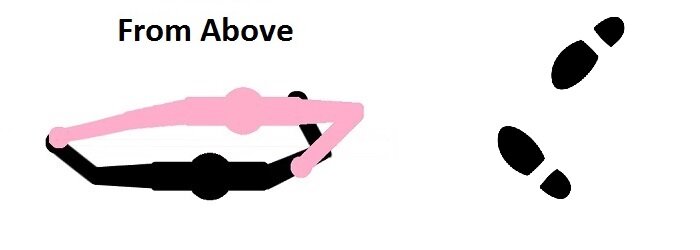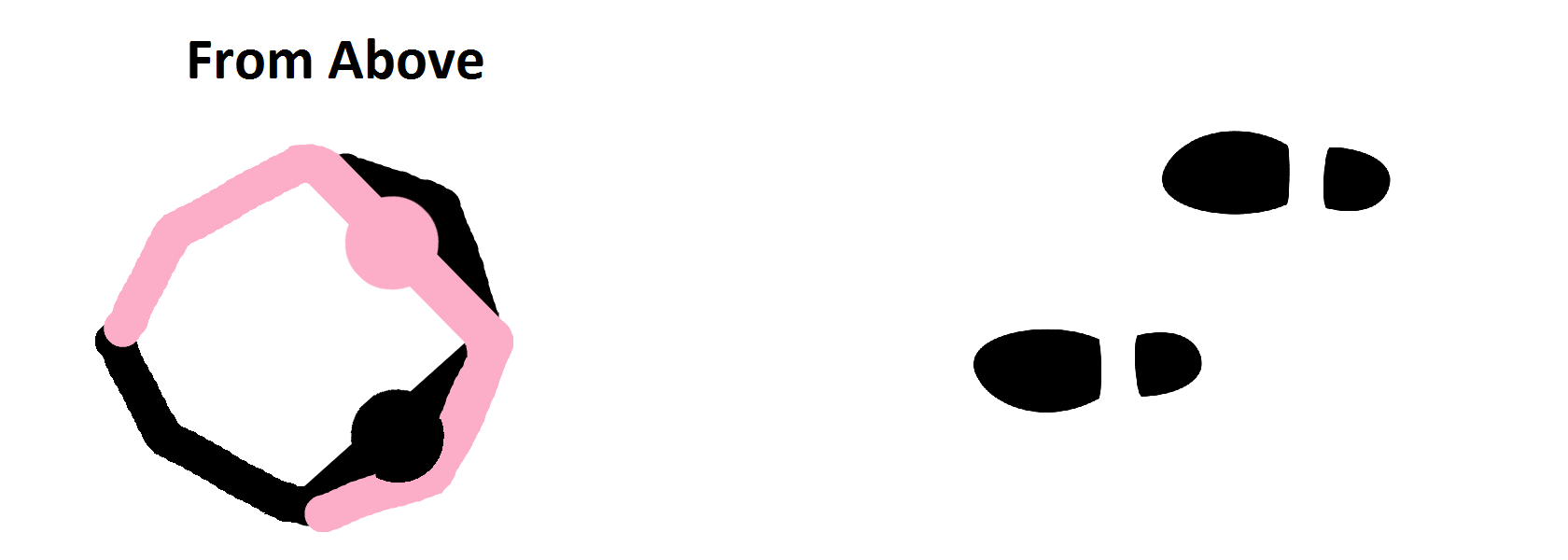Promenade Position in Samba 
15 February 2017
Most dancers have encountered the dreaded Promenade Position in Standard, and know to keep their frames toward their partners to avoid the back elbow from going behind the shoulder. Because of the mechanics of Samba, however, a good frame in Promenade Position is achieved in a completely different way. If you are dancing Promenade Position in Samba the same as you are in the other dances, you may not only be putting your technique at risk, but also your well-being.
Promenade Position in Standard
As stated in depth in a previous BGBB article, Promenade Position is different from Closed Position in that the head, the hips, the knees, and the feet all turn approximately 1/8: for the Man, the turn is to the left, and for the Lady, to the right. This causes the feet, knees, and hips to be perpendicular to each other (with the Lady's feet slightly behind, due to her offset), while the shoulders remain facing each other.

A slight turn of the shoulders is permissible as a consequence of turning the hips, but the dancer should always be trying to maintain his shoulders toward his partner to keep the frame undisturbed.
The Knees
To understand why Promenade Position is not the same in Samba as it is in Standard, you must first understand the ways your knees work. Unlike the hips and shoulders which are ball and socket joints, and can move in all sorts of directions, the knees can only bend and straighten in one direction, and that direction is over the second toe (unless you are everting or inverting your ankle). If you stand with your feet pointing forward, your knees should bend forward; if you stand with your feet pointed outward, your knees should bend outward.

Twisting your knee to bend in a direction other than over your second toe can result serious injury, and even if you haven't been injured yet, the wear on the cartilage and connective tissue can worsen over time until one day they fail. The knees are one of the joints in the body that are the easiest to injure, and the number one reason dancers are put out of commission permanently is because of knee injury.
The Samba Bounce
The Samba Bounce sends the knees forward and back, bending on the first half of the beat, and straightening on the second half. Because of the way the knees work, if you are standing with your feet closed, pointing LOD, just dancing the Samba Bounce, your knees should go down LOD. Likewise, if you are facing LOD with the body, but standing on your LF which is pointing DC, your left knee should bounce the way the foot is pointing: DC.
When walking down LOD, the bounce will move down LOD on each step so as not to interrupt the momentum of the body, but that means that the stepping foot must be placed pointing LOD, or else the knee would be at risk for injury. But how can a couple be in Promenade Position if both of them have their feet pointing in the same direction, down LOD?
The Solution
The solution to this problem is to modify promenade position to allow the feet to point LOD. Obviously it wouldn't be possible to twist the body in such a way that the feet could point LOD while the shoulders remained parallel, while still maintaining enough flexibility in the body to dance. Typically, no position is ever maintained where the hips and shoulders are turned more than 1/8 from each other, so in this case, the feet, knees, and hips will point LOD, and the shoulders will open outward to become perpendicular: the Man's shoulders facing DW and the Lady's DC.

Lest the back elbow go behind the back shoulder and result in an ugly frame, the Man's right hand will slip around the Lady's back, so that it rests on the far side of her spine, while the Lady's left hand will slip around the Man's shoulders so it rests on the back of the far shoulder. The result is a frame more circular than that of Standard, but it allows the momentum of the bounce action to be maintained while minimizing the risk of injury to the knees.